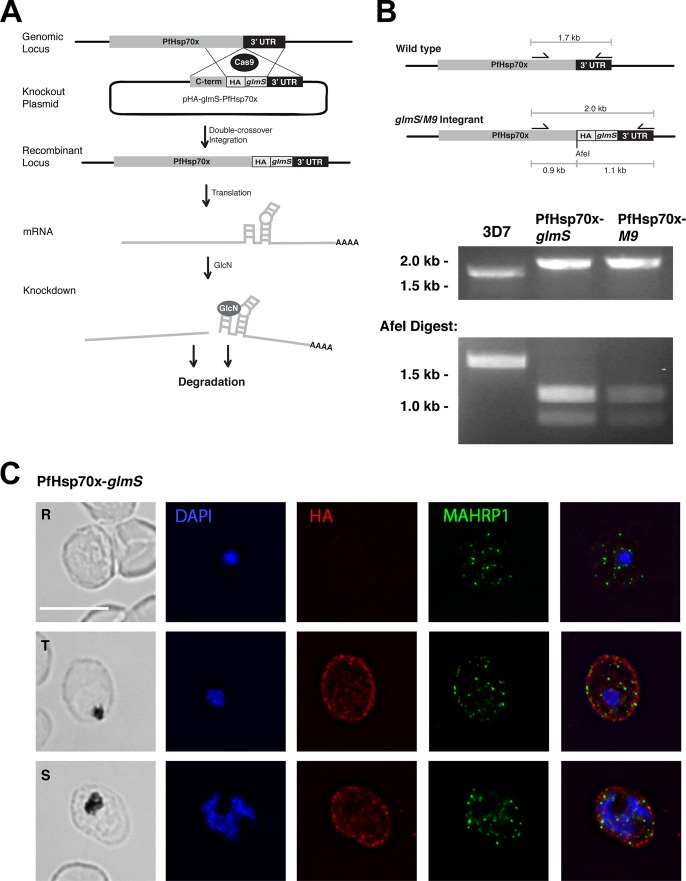FIG 1 .
CRISPR/Cas9-mediated integration of HA-glmS/M9 at the PfHsp70x locus. (A) Diagram showing integration of the HA-ribozyme sequence and GlcN-induced degradation of mRNA. Cas9 introduces a double-stranded break at the beginning of the 3′ UTR of the pfhsp70x locus. The repair plasmid provides homology regions for double-crossover homologous recombination, introducing a triple-hemagglutinin (HA) tag and the ribozyme sequence. Following translation and addition of glucosamine (GlcN), the PfHsp70x-glmS mRNA is cleaved by the ribozyme and is subject to degradation. C-term, C terminus. (B) PCR test confirming integration at the PfHsp70x locus. DNA was purified from transfected, cloned parasites, and primers were used to amplify the region between the C terminus and the 3′ UTR of pfhsp70x. The PCR products were digested with AfeI, further confirming integration. (C) IFA showing export of HA-tagged PfHsp70x. Asynchronous PfHsp70x-glmS parasites were fixed with acetone and stained with specific antibodies. From left to right, the images are phase-contrast micrographs of parasites, parasites stained with DAPI (parasite nucleus) (blue), parasites stained with anti-HA antibody (red), parasites stained with anti-MAHRP1 antibody (green), and fluorescence merge images of the parasites. Abbreviations: R, rings; T, trophozoites; S, schizonts. Bar, 5 µm.

